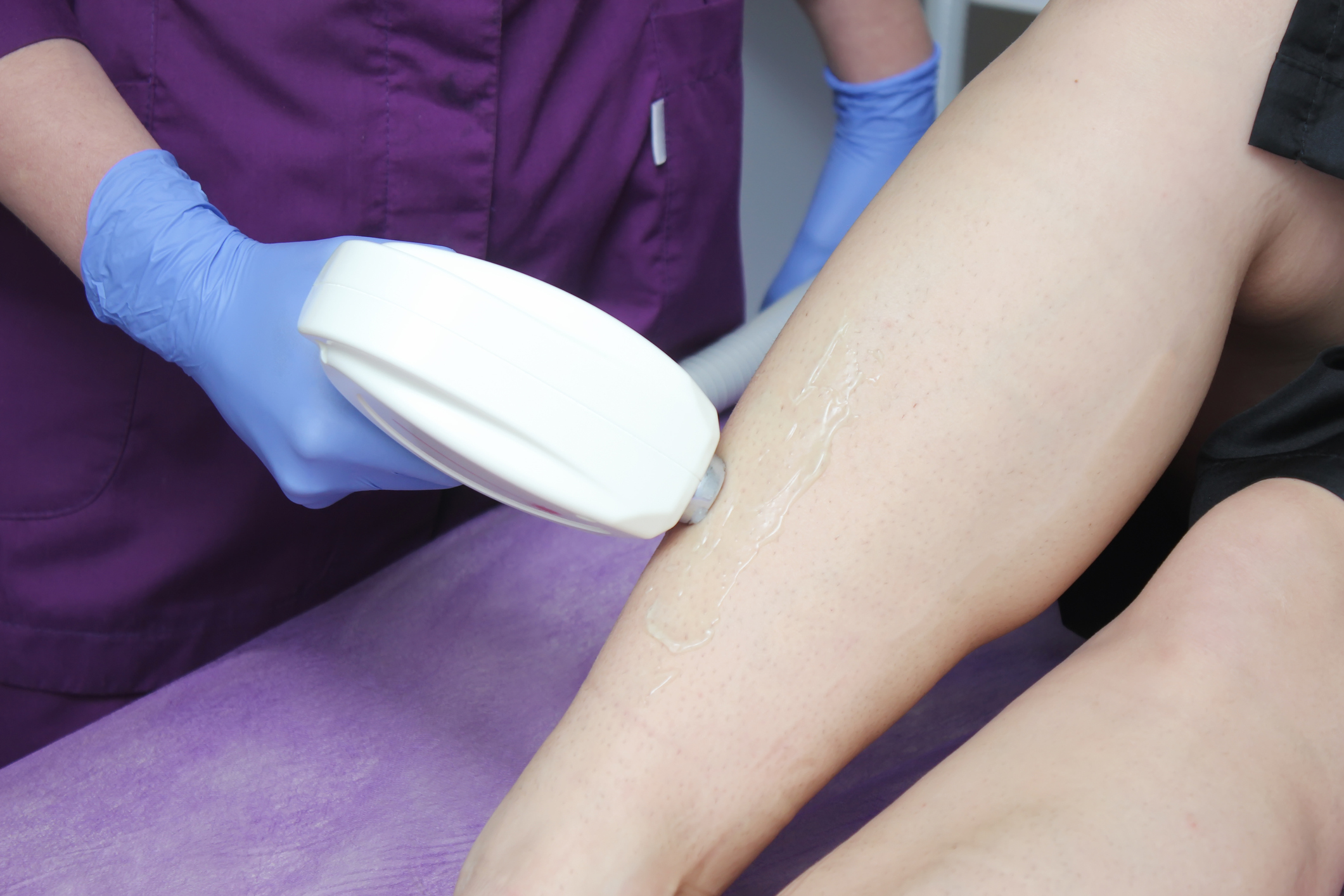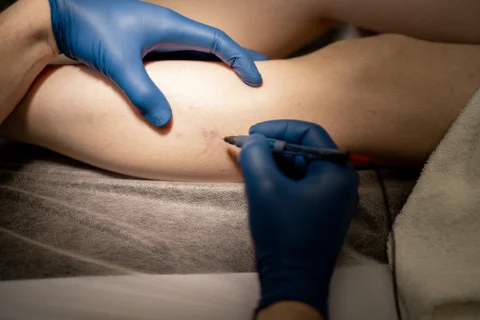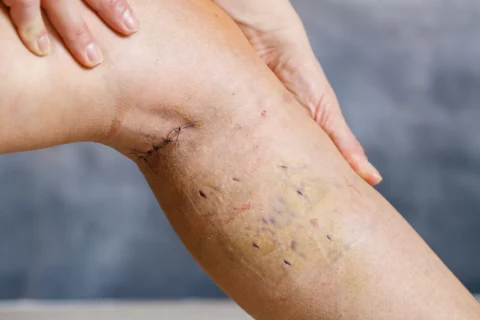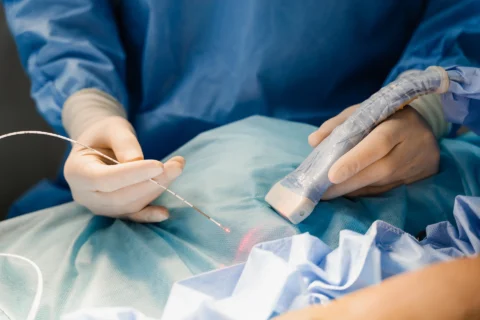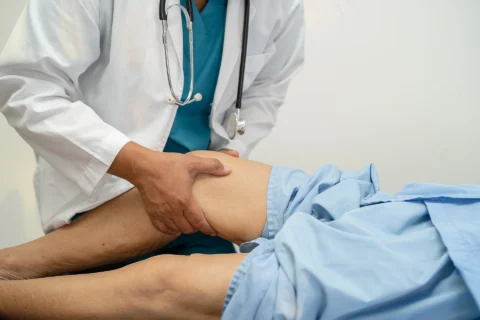Chronic venous insufficiency is a common vein disease that may develop into a venous ulcer or deep vein thrombosis if left untreated. Although there are different medical treatments for this venous disease, many patients also explore Ayurveda treatment as an alternative mode of therapy.
So is Ayurvedic treatment effective for managing chronic venous insufficiency and its symptoms? Additional research is still needed to support the effectiveness of Ayurvedic medicine on patients with chronic venous insufficiency. Ayurvedic treatments may contain chemicals or ingredients that trigger an allergic reaction in some patients, so always make sure to talk to a doctor first before starting this type of treatment.
What is Ayurvedic Treatment for Chronic Venous Insufficiency?
Chronic venous insufficiency (CVI) happens when damaged leg veins don’t function properly, preventing the blood from flowing back to the heart. This results in increased blood pressure and blood pooling in the lower legs and extremities. It’s also a common vein condition that affects about 2.5 million people in the country.
CVI should be treated immediately before it develops into a more serious health condition that affects the patient’s quality of life. The good news is that most cases of CVI don’t require vascular surgery so patients can be treated with different approaches – one of which is the Ayurvedic treatment.
But like any other alternative medicine, many people are still skeptical about the effectiveness of Ayurvedic herbs and other Ayurvedic treatment methods. To find out how exactly this approach works and whether it might be the solution for you, then it’s better to know more about the health condition and alternative medicine first.
Chronic Venous Insufficiency Symptoms and Causes
Chronic venous insufficiency can affect different blood vessels in the legs, including superficial veins, deep veins, and perforating veins. Some patients may only feel mild symptoms at first while others may experience severe pain, skin discoloration, skin ulcers, and more.
Here are some symptoms of chronic venous insufficiency to watch out for:
- Tired or achy legs
- Tingling or burning sensation on the lower leg
- Pain or cramping on the legs at night
- Reddish-brown skin discoloration around the ankles and shins
- Swelling (edema) in the ankles and lower legs, especially after a long day or at night
- Itching, flaking, or leathery-looking skin
- The appearance of a varicose vein or spider vein
- Venous ulcers (also known as venous stasis ulcer or a varicose ulcer)
- Slow wound healing of open sores in the lower extremities
Any vein problem that results in poor blood circulation and venous hypertension causes vein dilation. This eventually leads to broken venous valves and blood pooling inside the affected vein. Blood pressure inside the veins may increase due to a few reasons, such as:
- A blood clot inside the vein blocks blood flow inside the blood vessels and causes more venous pressure buildup. This may cause permanent damage to the venous valve even after the affected vein has healed.
- A recent leg surgery or injury prevents the blood flow back to the heart. It may also increase pressure inside the diseased vein.
- Weight gain due to pregnancy or obesity increases pressure in the leg veins, causing some of the veins and valves to get damaged.
- Muscles play an important part in blood circulation since they act as pumps that move the blood from the legs back to the heart, so standing or sitting for long periods decrease the blood flow and cause blood to pool inside the veins.
- Some patients are also born with vein malformations in their legs, like the lack of venous valves, that only contribute to their inability to properly pump blood back to the heart.
What Ayurvedic Treatments Are and How They Work
Ayurveda is a type of alternative, ancient medicine from India that promotes the balance of mind, spirit, and body to achieve optimal physical and mental health. It usually involves different approaches like diet, herbal therapies, massages, and meditation to achieve the best results for each patient.
According to the Ayurvedic perspective, the appearance of varicose vein symptoms (varicosis) and chronic venous insufficiency is an indication of a faulty or imbalanced Vata dosha (air and space humor). For the Ayurvedic treatment to work, the diet, Ayurvedic herbs, and other measures should restore balance to the Vata dosha.
How Effective is Ayurvedic Treatment for Venous Conditions?
Only a few scientific studies explore the use of Ayurvedic treatments for varicose veins and chronic venous insufficiency. Most of the published studies are small projects or focused case studies, so there isn’t conclusive evidence to support the efficacy of this alternative medicine.
One of the more recent studies about Ayurvedic treatment is a 2013 case study about a 61-year-old man with varicose ulcers. The subject’s treatment plan included different Ayurvedic medicines and enema therapy, which led to about 80% improvement over the entire course of the treatment.
Another study about Ayurvedic medicine was published in 2018, but the results weren’t as successful as the previous one. The case was about a 54-year-old man who went to the hospital because of vein swelling or edema. He had a history of ineffective Ayurvedic approaches, but he experienced relief after an endovenous laser ablation procedure.
Is It Safe to Try Ayurvedic Treatment?
Some Ayurvedic oil and medicine available online may contain potentially harmful compounds like mercury, lead, and arsenic, so it’s important to always check the label of each medicine before taking them.
Ayurvedic treatment also involves a wide variety of animal and plant products, some of which might cause skin irritation, allergic reaction, or unwanted drug interaction when ingested or applied to the skin. Before trying any type of Ayurvedic treatment, it’s best to consult with a medical professional first so they can advise an individual about the potential side effects and other safety concerns.
5 Ayurvedic Treatments for Chronic Venous Insufficiency

Many people also define Ayurveda treatment as “the science of life” that treats diseases using herbs, essential oils, and other natural methods. Here are some of the most common Ayurvedic treatments for varicose veins, chronic venous insufficiency, and other venous conditions:
1) Ayurvedic Diet
Diet is one of the biggest factors that affect an individual’s dosha. Treating vein conditions using Ayurvedic treatment involves avoiding different foods that unbalance the Vata dosha, such as:
- Bitter foods like bitter melon, eggplant, and leafy green vegetables have a sharp and dry taste.
- Pungent foods like radishes, chile, and turnips have a spicy taste.
- Astringent foods like grains, fruits, and legumes leave the mouth feeling dry.
2) Ayurvedic Medicines
Traditional Ayurvedic medicines are often taken orally. Some of them are made of various natural products, but others have an extensive list of ingredients to erase varicose veins and treat chronic venous conditions. Here are a few of the most common natural ingredients from Ayurveda that are believed to help treat venous disorders:
- Sariva (Indian Sarsaparilla)
- Eranda (Castor Bean)
- Manjistha (Indian Madder)
- Gotu kola (Asiatic Pennywort)
- Chirabilva (Indian Elm Tree)
- Horse chestnut seed extract
- Brahmi
- Kachnaar
- Fenugreek
3) Yoga Asanas and Physical Therapy
Simple physical activities like cycling, stretching, walking, and swimming help improve blood circulation in the legs. But if an individual wants to focus more on yoga poses, here are some useful postures to try:
- Virasana (hero pose)
- Sarvangasana (shoulder stand)
- Kapotasana (pigeon pose)
- Bhujangasana (cobra pose)
- Shavasana (corpse pose)
- Hasalana (plough pose)
- Pawanmuktasana (wind-relieving pose)
4) Abhyanga
Abhyanga is one of the most popular massages in Ayurveda that’s believed to restore the balance of doshas in the body. It’s usually performed using warm oil that’s applied on the entire body – from the top of the scalp down to the soles of the feet.
The combination of warm oil and massage strokes in Abhyanga is also thought to promote health and wellness. It’s usually performed by massage therapists, but individuals at home can also carry out a self-massage as long as they have the right type of oil.
The type of oil to use depends on the dosha. Since Ayurveda treatment for chronic venous insufficiency involves bringing back the balance to the Vata, heavy oils from avocado, sesame, and almond are often recommended.
5) Leech Therapy
Leech therapy is exactly what it sounds like – medicinal leeches are attached to the patient’s skin to boost blood circulation in the treatment area. These leeches have 3 jaws with tiny rows of teeth that they use to pierce the patient’s skin. They extract blood from an individual for about 20 to 45 minutes while depositing anticoagulants using their saliva.
The anticoagulants in these leeches cause the blood to thin in the problem area of the legs, resulting in better circulation as they feed on the patient’s blood.
More Effective Treatment Options by Vein Center Doctor
Although Ayurvedic medicine might be effective for some patients, it might also be harmful to others because of the use of harmful compounds and allergy-triggering ingredients. If you’re looking for more effective treatment options that were proven to be effective dozens of times, then here’s what we offer at Vein Center Doctor:
1) Sclerotherapy
Sclerotherapy is one of the most preferred treatments for chronic venous insufficiency because it’s effective and minimally invasive. This procedure involves injecting a sclerosant directly into the affected vein, irritating its walls and causing it to collapse. Once the damaged vein collapses, it’s eventually reabsorbed into the local tissues until it fades away. The blood flow is then redirected into the healthier blood vessels nearby.
2) VenaSeal
VenaSeal is a revolutionary treatment for varicose veins, chronic venous insufficiency, and other vein disorders. It uses an FDA-approved medical glue that closes the damaged veins in the legs or other parts of the body. During the treatment, a small puncture is made on the surface of the skin where the VenaSeal device is inserted. The entire procedure only takes about 30 minutes and patients are allowed to return home after their appointment.
3) Compression Therapy
Compression therapy is one of the oldest treatment options for chronic venous insufficiency, but it also remains one of the most effective approaches. It requires patients to wear appropriate compression stockings or socks to improve blood flow in their lower extremities. Aside from being an effective treatment by itself, some doctors also combine compression therapy with other vein treatments to speed up healing and enhance the results of the procedure.
4) Radiofrequency Ablation
Radiofrequency ablation (RFA) for varicose veins is a minimally invasive vein treatment that erases pesky leg veins while addressing the underlying cause of chronic venous insufficiency. It uses a special catheter to deliver electricity and heat to the damaged veins, causing them to collapse and seal off.
Get the Best Treatments for Chronic Venous Insufficiency at Vein Center Doctor

Ayurvedic medicine involves different types of therapies for a more holistic treatment of chronic venous insufficiency. While this alternative medicine seems like the ideal solution for CVI patients who want to experience a more natural approach, Ayurvedic treatments might include harmful compounds and ingredients that bring more harm than good for you.

